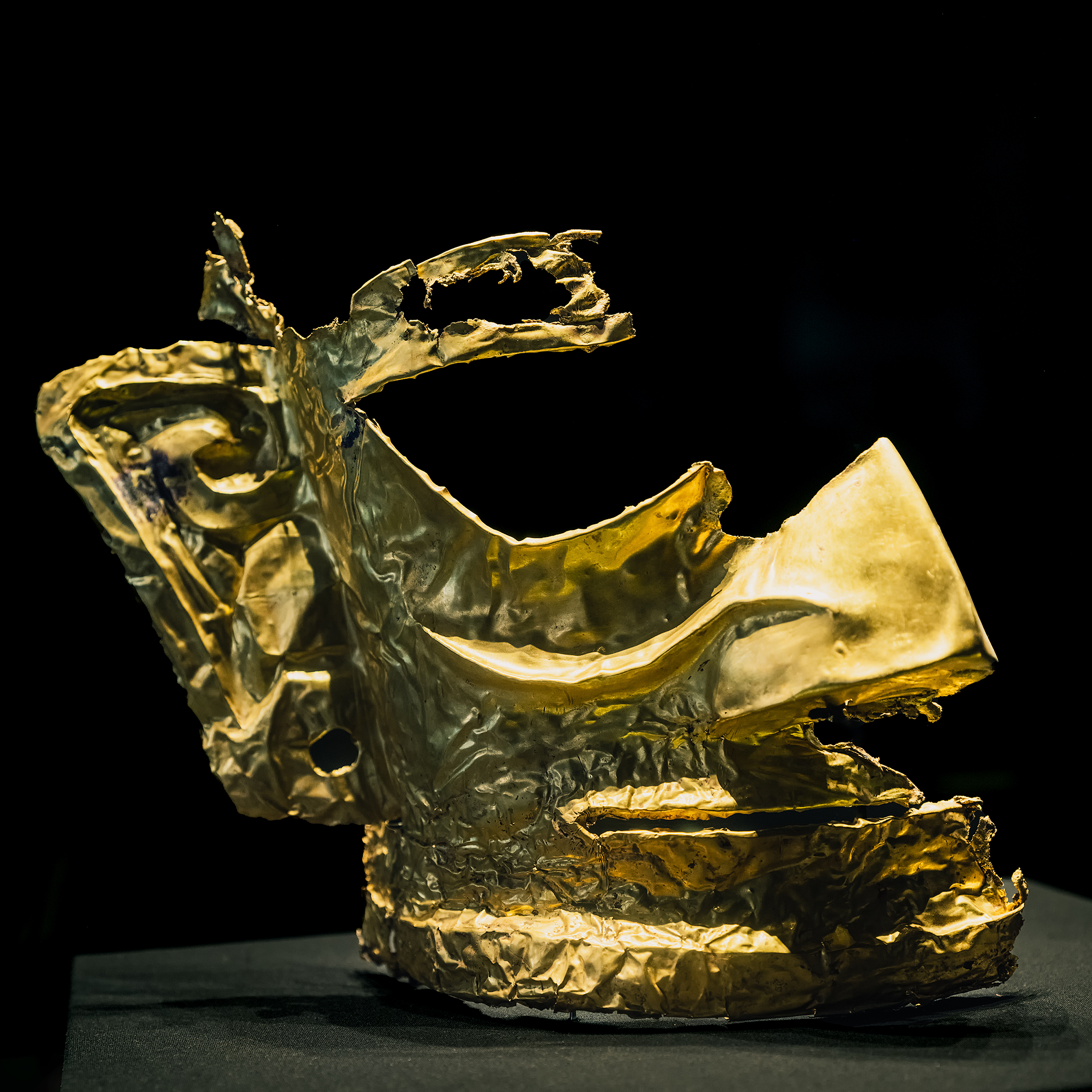Heaviest Gold Mask of Sanxingdui

The half gold mask at the new Sanxingdui Museum. (PHOTO: VCG)
By ZONG Shihan
Among the gold masks unearthed at the Sanxingdui archaeological site, one that covers only half a face holds China's record for the heaviest gold object.
After restoration, the gold mask weighs about 280 grams and is about 23 centimeters wide and 28 centimeters high. Its gold content is about 85 percent and silver content about 13 to 14 percent. It is projected that the complete gold mask would weigh more than 500 grams, which is larger and heavier than the gold mask unearthed at the Jinsha Site in Chengdu, and also heavier than the 463-grams gold scepter unearthed at Sanxingdui, making it the heaviest gold object of the Shang Dynasty (1600-1046 BC) unearthed in China to date.
The production process of the mask is complex and exquisite. Ancient Chinese first hammered pure gold into beaten gold and shaped it to resemble the outline of the head of a bronze figure statue.
Then, they hollowed out the eyes and eyebrows, and attached the mask to the bronze human figure statue. Finally, the mask was polished to a high luster, which indicates that craftsmen over 3000 years ago were very proficient in polishing techniques.
A large number of gold artifacts have been unearthed from the Sanxingdui site, all of which are related to religious rituals, which is very different from the use of jade and bronze artifacts as sacrificial items in other regions during the same period. This phenomenon indicates that the ancient Shu people seemed to have a special worship using gold artifacts.
It is inferred that the gold mask was also used for ritual purposes. However, the specific use of the gold mask is still an unsolved mystery, and further archaeological excavation and research are needed to verify its use.







